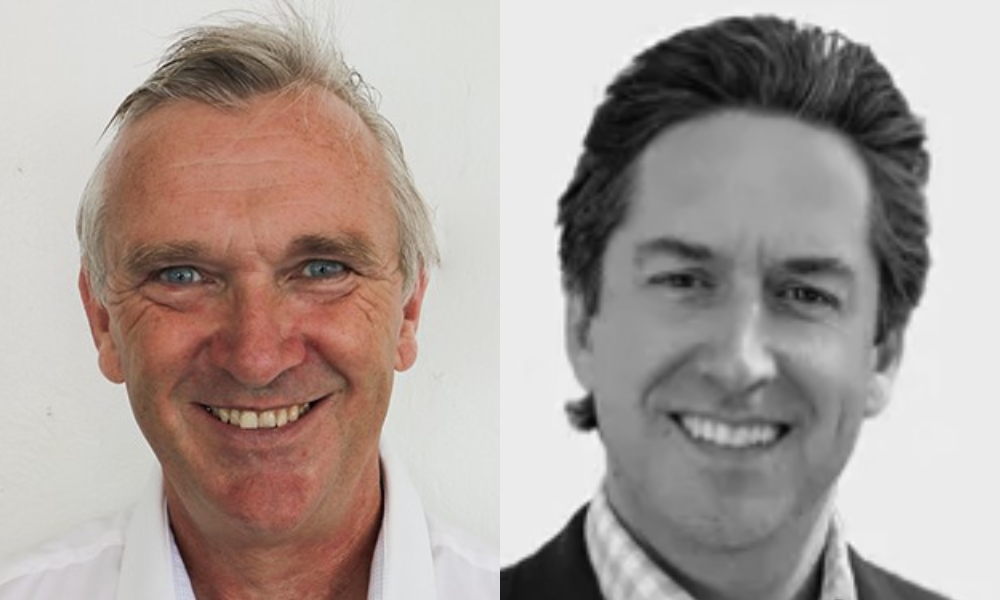What are the advantages of the hybrid fronting model – and where does it go next?

What are the advantages of the hybrid fronting model – and where does it go next? | Insurance Business Australia
Reinsurance
What are the advantages of the hybrid fronting model – and where does it go next?
Reinsurance broking leaders share insights into key market trends
Reinsurance
By
Mia Wallace
The rapid evolution of the hybrid fronting model is continuing to reshape the reinsurance industry – but what are the main advantages of this model and where does hybrid fronting go next? These were among the questions put to Bermuda Broker’s CEO Hugh O’Donnell, chief broker Neil Hitchcock and business development consultant Kurt Bounds in a recent interview with Re-Insurance Business.
A core benefit of the model is that it means the person closest to the risk is measuring it very closely, because they’re on the hook for taking a meaningful share of risk, noted O’Donnell (pictured left). In addition, added Bounds, hybrid fronting demonstrates the legitimacy of a particular progress because it has been vetted by a participating carrier.
“Taking it from the MGAs’ perspective, MGAs are looking for good solid insurance paper, which will give them the pen to enable them to write the products they want to write,” said Hitchcock (pictured right). “If they can do that just by securing a relationship with an insurance company or Lloyd’s syndicate to be able to do that without any sort of front, so much the better as it means there’s one less mouth to feed in the whole chain.
“For the MGA, going fronted and accessing the reinsurance market just gives them far more capacity and far more players to choose from to get their programme off the ground. And quite often, the fronting or issuing carrier wants you to come to them with reinsurance because they don’t necessarily have the expertise to underwrite the MGA and all the people etc. So, it’s potentially a longer process, but it just opens up the avenue of potential options for the MGA.”
How hybrid fronting aligns with the tone of the re/insurance industry
An essential factor to bear in mind when discussing fronting is the personal element that underpins the way the re/insurance industry works, according to O’Donnell. While his team have great connections across the marketplace, often MGAs simply don’t yet have those relationships and so the focus for them is how they can establish a strong connection with the fronting company.
“You’d be amazed how often that matters,” he said. “Does the fronting company have a good face with the reinsurer? Have they done business with them in the past so that their people know each other? It is astonishing how often these things come down not just to who’s willing to do it but who’s willing to do it that you’re willing to do it with.”
What – and where – next for the hybrid fronting model?
Offering his prediction on where hybrid fronting goes next, O’Donnell said he is expecting to see the switch to formally long-term relationships. The hybrid fronting model has always been about increased participation in an insurance risk in a particular year. But the MGA world is not a world where changing paper is a good idea.
“Once you establish the relationship, you really want to make sure that relationship is going to last, very often because you’re quoting business 90 days out,” he said. “So, if your renewal date is July 01, on April 01 you have to have your renewal in place… There has already been a move where the paper has been willing to give the MGA multi-year contracts and I think there’s going to be much more movement towards that over time.
“Alongside that, I see the requirement that the MGA participate more in the risk commercially and a tightening of the relationship between the MGA and the paper. At the moment, it’s very typically the relationship between the MGA and the reinsurer that matters. I think over time it’s going to switch and there’s going to be a significant portion of paper making a very serious effort to have a long-term relationship with the MGA, where the relationship with reinsurers is more transactional.”
Will MGAs be required to take on more risk going forward?
Moving down the food chain of the market, Hitchcock said he foresees that there will be greater pressure for MGAs to take more risk, in the same way that reinsurers have started requiring issuing carriers to take on more risk. If you rewind less than 20 years, he said, MGAs could happily just take a set percentage of every dollar of the premium they write, regardless of whether it made a profit.
“Now, most MGA programs want their commissions to keep the lights on and cover their costs but where they make their real money is on the underwriting profit,” he said. “And I think there’ll be greater pressure and maybe more formalised ways that MGAs take risks, whether that’s through captive cells rather than just a sliding scale commission. Whatever that looks like, I think there’ll be increasing pressure on the MGA to take an increasing amount of risks on themselves.”
From his perspective, Bounds said, he believes there will be greater synergy between MGAs and participating fronting market, where they will have some form of ownership or equity in each other. As the participating fronts start to take bigger and bigger slices of the risk, he’s waiting for the day that the first participating fronting market becomes a primary program carrier.
“It seems logical that somewhere down the road that’s going to happen,” he said. “And think there will have to be more participating fronting markets to support the MGA world as we continue to go further down that road.”
Keep up with the latest news and events
Join our mailing list, it’s free!






